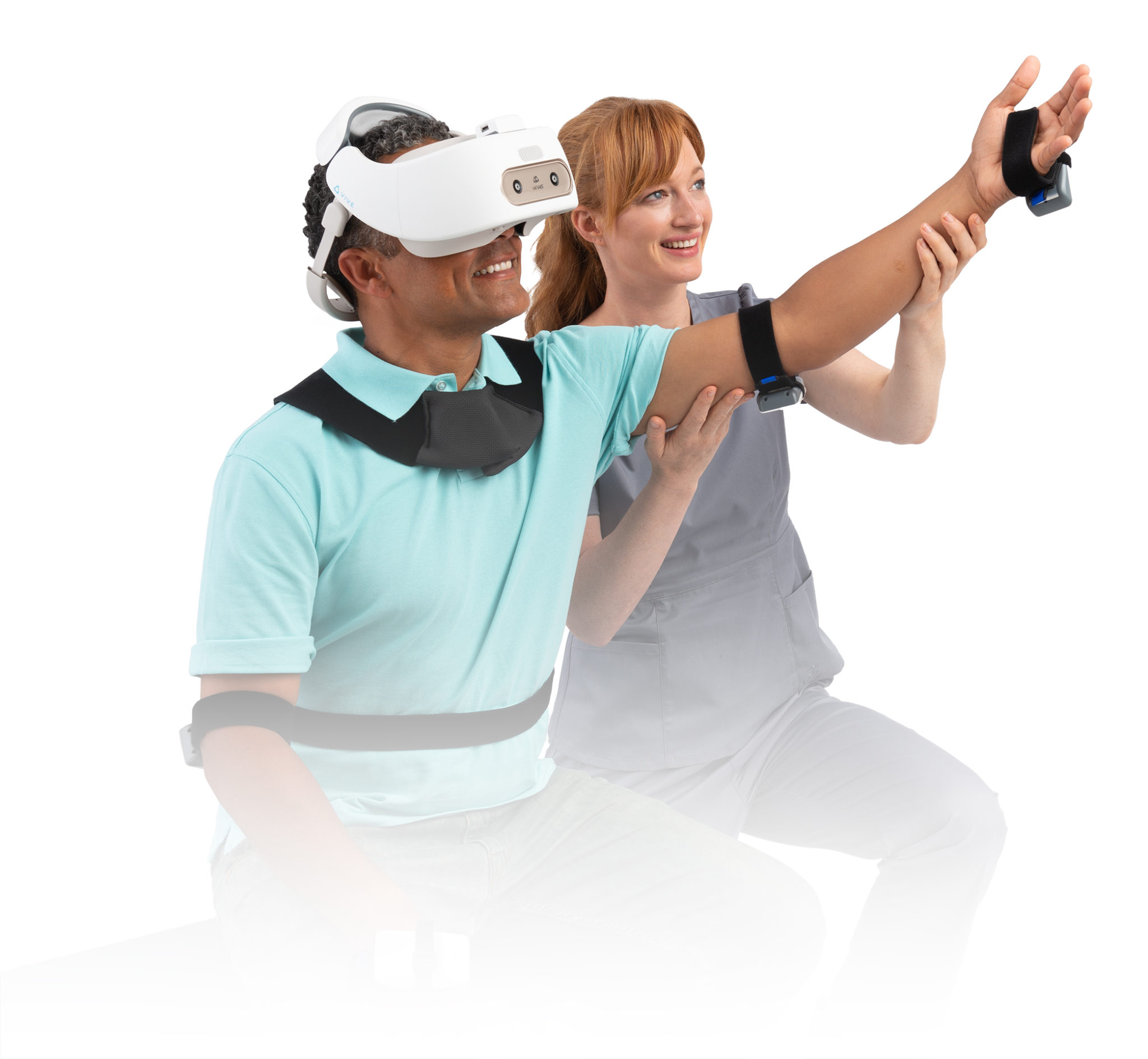
March 9, 2020 – HTC Vive and Penumbra, a global healthcare company focused on innovative therapies, have today announced that Penumbra’s new solution for stroke recovery, the REAL Immersive System (REAL System) is using a custom-designed Vive Focus head mounted display to help patients recover from stroke and other neurological injury.
According to the companies, rehabilitation can help survivors of neurological injury, such as those due to stroke or trauma, recover their abilities. Rehabilitation drives neuroplasticity, or the brain’s ability to reorganize itself by forming new connections. However, Penumbra and HTC Vive state that research has shown only 30% of patients ever attend rehabilitation, and even if they do attend, the average amount of days spent rehabilitating using traditional methods is less than optimum. Created by Penumbra, and using Vive VR technology, the REAL System places patients into an animated world with therapeutic experiences designed to increase neuroplasticity through patient engagement and retention.
“When it comes to patients who have suffered neurological injury, there are very real barriers to overcome in the rehabilitation process,” said Dan O’Brien, HTC Global Head of Enterprise. “We’re excited the Vive Focus can help by providing the power and portability for clinicians to treat patients outside of traditional settings with the REAL System.”
The REAL System is a portable VR rehabilitation solution for upper-extremity rehabilitation that can be used at the patient’s bedside, in a therapy gym, or in a mobile health location. The three main components of the system include the Vive Focus headset, a set of six sensors, and a tablet with the TherapyView app that allows the clinician to administer and monitor the therapy session.
Upon powering on, the patient is immediately immersed in VR, engaging in visual and physical challenges guided by their therapist. Body sensors are attached with soft neoprene bands, and with a set-up time that Vive states is less than two minutes, the patient is working in a virtual world with a full-presence avatar. The therapist can see what the patient sees on an included tablet interface, which the therapist uses to select various activities, adjust activity parameters, and monitor the patient’s experience at the tap of a button. Data from the patient’s movement and accomplishments is securely saved so that documentation is easy to produce, and long-term trending can guide the patient’s recovery.
Vive Focus is HTC’s signature standalone headset for enterprises. The high-resolution dual 3K AMOLED screens and Qualcomm Snapdragon 835 processor enables patients to enjoy real-time feedback and interaction with Penumbra’s content, while the wireless headset ensures patients can move freely. Penumbra worked closely with HTC to customize the headset specifically for rehabilitation patients, ensuring that it had the proper weight, fit and comfort.
Image credit: HTC Vive/Penumbra
About the author
Sam is the Founder and Managing Editor of Auganix. With a background in research and report writing, he has been covering XR industry news for the past seven years.




